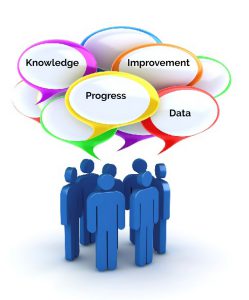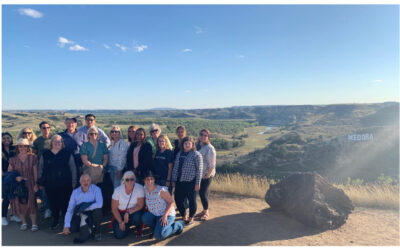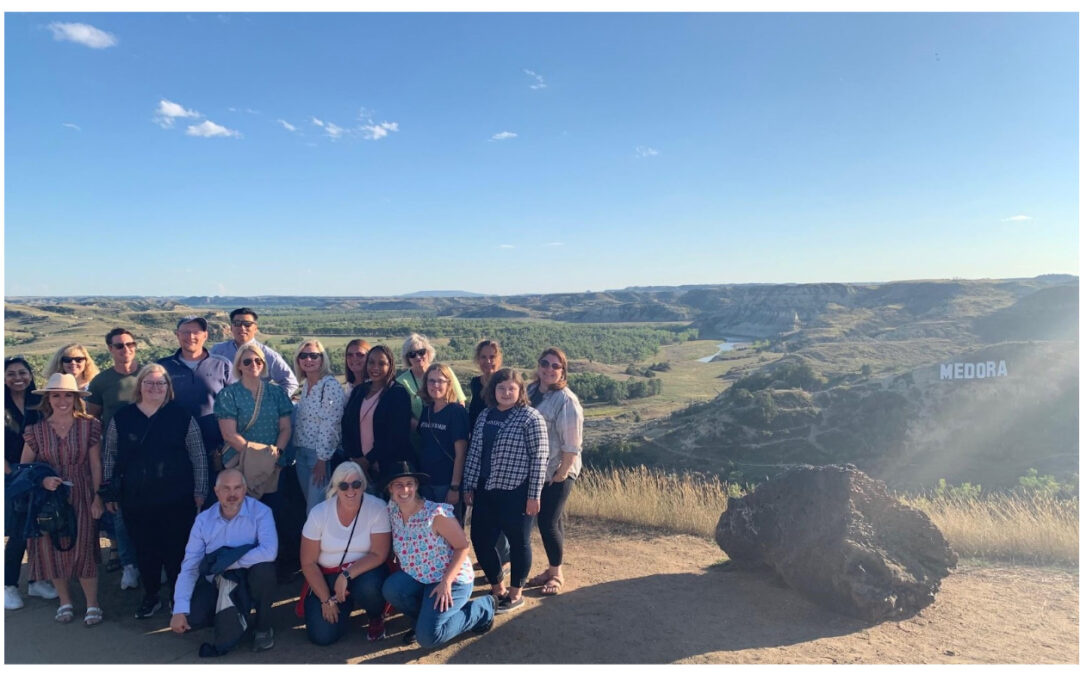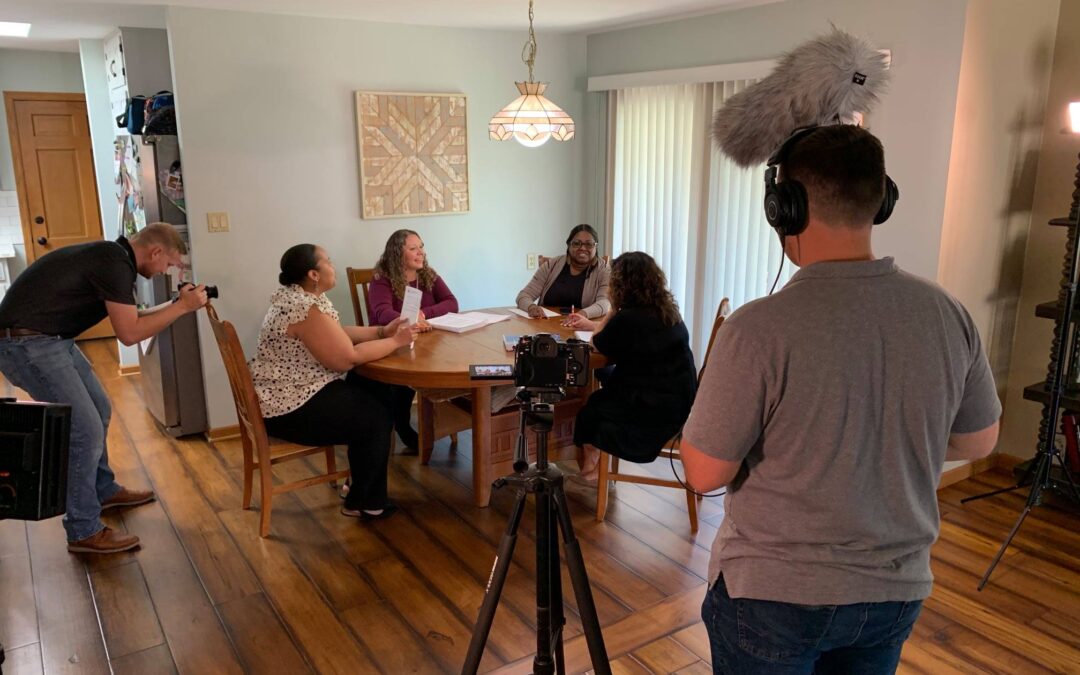 Imagine your organization recently conducted a program evaluation. Data was gathered from one of the programs offered and an analysis of the data revealed your program outcomes were met, some even exceeded! This is exciting news and you want to shout it out from the nearest rooftop… We understand this urge, but there are better (and safer) ways to share your evaluation data. In this blog, we discuss different audiences with whom an organization might share their evaluation results and the benefits of sharing them. Check out our blog discussing how to share your evaluation data.
Imagine your organization recently conducted a program evaluation. Data was gathered from one of the programs offered and an analysis of the data revealed your program outcomes were met, some even exceeded! This is exciting news and you want to shout it out from the nearest rooftop… We understand this urge, but there are better (and safer) ways to share your evaluation data. In this blog, we discuss different audiences with whom an organization might share their evaluation results and the benefits of sharing them. Check out our blog discussing how to share your evaluation data.
At Transform Consulting Group, we love seeing organizations use data to measure and achieve success! We also love helping organizations “visualize” success in easy-to-understand ways using simple charts and graphics. Once these data visuals are audience-ready, what are the next steps? Does an organization need to be intentional about sharing program evaluation data? Why?
Data is only as good as how it is used. If an organization collects data, analyzes it, and makes beautiful visuals with it, but few people actually see the results, what is gained from the experience? Probably not much! This connects back to a blog we wrote called, 4 Steps to Complete a Program Evaluation. Step number four in the process is to discuss the results of an evaluation and make data-informed decisions. In order to do this, evaluation data must be shared with the right people.
Our team typically compiles a summary report and/or slide presentation of an organization’s evaluation data for stakeholders to review the results and discuss the implications. A stakeholder is anyone who has a “stake”—an interest, concern, or investment—in an organization and/or program achieving (or not achieving) its goals. We categorize data sharing into two different “buckets”—internal and external. As it sounds, sharing data internally is with folks on the inside of an organization, and external data sharing is with folks on the outside looking in. Within each bucket, we’ve identified three important stakeholder groups and how sharing evaluation results can be beneficial, no matter what the data “says.”
Internal Stakeholders
1. Employees: It would be challenging to find a dedicated employee who would not care to see evidence of their daily efforts actually paying off and leading to positive change. The achievement of program outcomes reflected in data can help validate the combined efforts of all staff involved in a program’s design (if applicable) and delivery. It is important to share evaluation results with staff at all levels and not just employees at the top. Too often, we see that the information does not trickle down. Sharing, showcasing, and celebrating success builds morale and encourages staff to continue doing great work. In the business sector, this would be akin to celebrating a top-sales month!
On the other hand, results of an evaluation may reveal that a program is not achieving its intended outcomes and uncover potential reasons why not. Evaluation data can “shed light” on issues that staff and/or leadership were not even aware of that could hinder the ability to make an impact. Based on sharing these results, employees will know to expect workflow or programmatic changes in the near future without confusion or surprise.
At TCG, we recently worked with an organization that provides college and career readiness counseling for high-school students to evaluate their 8-week summer program. During orientation, students were given a pre-survey to assess their knowledge of college and career readiness subject matter before participating in the program. On the last day, students were given a post-survey to measure knowledge gained as a result of completing the program. Evaluation data was presented to program staff and leadership in easy to understand charts and graphs. Staff became excited when they saw how much college and career readiness knowledge students gained as a result of participating in the program! They were also glad to find out which areas students reported knowing the least about. As a result, staff could strengthen those areas of the program prior to the next round of incoming students.
2. Volunteers: Organizations that depend on volunteer work are always on the lookout for more help. Unfortunately, unpaid labor can be hard to come by, especially if volunteers don’t feel like their time and effort is making a difference. If an organization can show community impact as a result of volunteerism, their volunteers are more likely to feel validated and remain committed to the organization. Then they may even recruit more volunteers! In this case, evaluation data helps to promote satisfaction and the feeling of reward. Volunteers are motivated to stay put and not seek out other volunteer opportunities when they know that their time and talent is making a difference.
3. Board of Directors: The Board can use evaluation data to begin planning and discussing the future of an organization. If the data supports outcomes consistently being met, a Board may decide to expand the program’s service delivery to a larger area or broader audience. If the expansion is successful, the organization sustains a larger community impact and the Board (hopefully) feels a sense of accomplishment and pride in the organization.
For evaluations resulting in unmet program outcomes, the Board may recommend program model changes, or commit to focus on a problem area (e.g. staff professional development) during the upcoming year. Either way, sharing program evaluation results with Board members equips them to make informed decisions about what is best for the organization going forward.
External Stakeholders
1. Funders: Funders want to see a return on their investment into any organization. Many funders require organizations to conduct program evaluations to remain accountable for the results that their funds are directly supporting. Bottom line, funders want to know if the program is worth the resources it requires. Evaluation results help “quantify” worth for funders by showcasing to what extent the desired program changes are occurring. If a program performs as expected, it is likely that funding dollars will keep flowing.
Alternatively, if evaluation data shows program outcomes not being met and insignificant or no change is occurring, a funder may decide not to invest or discontinue investing in an organization. Funders are often supporting multiple organizations at once and want to feel confident their money is well-spent and producing the best results!
2. Partners: Evaluation data may help make a case for two or more organizations to join forces and provide combined programs or services within a community to maximize impact. Sharing data can be a positive step in the direction of collaborating and working towards common goals. Local programs may unknowingly be competing for clients, resources, or limited funding. Some are likely struggling to meet goals. Awareness of such issues, made apparent through evaluation data, could spark ideas to collaborate and leverage partnerships to provide joint programming. The result? Sharing data may lead organizations to do what is best for the community, while also doing what is best for their budget!
Ideally, routine program evaluation and data sharing will keep organizations accountable to each other in the future. On the other hand, evaluation data can show when partnerships are no longer working and should be realigned or dissolved.
3. The Public: Sharing data with communities helps to legitimize an organization’s purpose in the public eye. Program evaluations are one way to demonstrate community impact. Evaluation data goes a step further to show how much impact an organization or program is making. Nonprofit organizations are public agencies with a responsibility to communicate back to the public about the goodwill that they are making from the public’s investment in them!
Foundations, grant makers, and other funders research shared public data about an organization or program to determine whether or not to invest in it. Evidence of successful programming can suggest an organization itself is well-managed. This inspires confidence that funding dollars will also be used wisely and generate the greatest return on investment.
Internally, sharing evaluation results can galvanize an organization–arming employees (program staff and management) and the Board of Directors with data they need to ensure program outcomes are being met and take appropriate actions when issues arise. External stakeholders use data to verify an organization’s credibility and hold it accountable to the outcomes it seeks to achieve. Ultimately, stakeholders use data to keep an organization on track to accomplish its overall goals.
It’s hard to win a game if your team has no idea of the score—or even worse, what game they are playing. Sharing evaluation data helps to keep an organization’s impact transparent and everyone involved on the same page. Talk with one of our team members today and learn how you can get the word out about your evaluation results!





